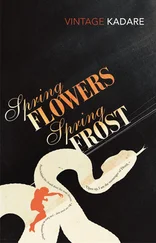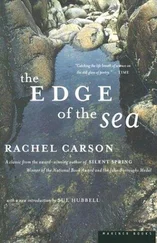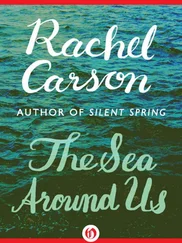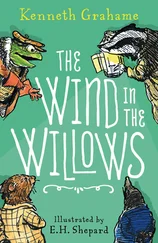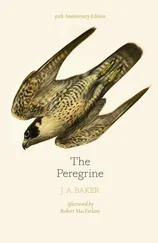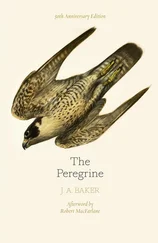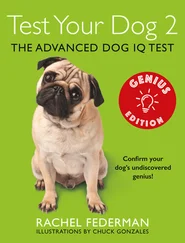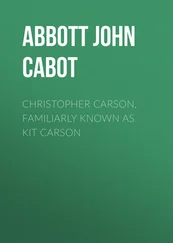The alleged “safety” of malathion rests on rather precarious ground, although—as often happens—this was not discovered until the chemical had been in use for several years. Malathion is “safe” only because the mammalian liver, an organ with extraordinary protective powers, renders it relatively harmless. The detoxification is accomplished by one of the enzymes of the liver. If, however, something destroys this enzyme or interferes with its action, the person exposed to malathion receives the full force of the poison.
Unfortunately for all of us, opportunities for this sort of thing to happen are legion. A few years ago a team of Food and Drug Administration scientists discovered that when malathion and certain other organic phosphates are administered simultaneously a massive poisoning results—up to 50 times as severe as would be predicted on the basis of adding together the toxicities of the two. In other words, 1/100 of the lethal dose of each compound may be fatal when the two are combined.
This discovery led to the testing of other combinations. It is now known that many pairs of organic phosphate insecticides are highly dangerous, the toxicity being stepped up or “potentiated” through the combined action. Potentiation seems to take place when one compound destroys the liver enzyme responsible for detoxifying the other. The two need not be given simultaneously. The hazard exists not only for the man who may spray this week with one insecticide and next week with another; it exists also for the consumer of sprayed products. The common salad bowl may easily present a combination of organic phosphate insecticides. Residues well within the legally permissible limits may interact.
The full scope of the dangerous interaction of chemicals is as yet little known, but disturbing findings now come regularly from scientific laboratories. Among these is the discovery that the toxicity of an organic phosphate can be increased by a second agent that is not necessarily an insecticide. For example, one of the plasticizing agents may act even more strongly than another insecticide to make malathion more dangerous. Again, this is because it inhibits the liver enzyme that normally would “draw the teeth” of the poisonous insecticide.
What of other chemicals in the normal human environment? What, in particular, of drugs? A bare beginning has been made on this subject, but already it is known that some organic phosphates (parathion and malathion) increase the toxicity of some drugs used as muscle relaxants, and that several others (again including malathion) markedly increase the sleeping time of barbiturates.
In Greek mythology the sorceress Medea, enraged at being supplanted by a rival for the affections of her husband Jason, presented the new bride with a robe possessing magic properties. The wearer of the robe immediately suffered a violent death. This death-by-indirection now finds its counterpart in what are known as “systemic insecticides.” These are chemicals with extraordinary properties which are used to convert plants or animals into a sort of Medea’s robe by making them actually poisonous. This is done with the purpose of killing insects that may come in contact with them, especially by sucking their juices or blood.
The world of systemic insecticides is a weird world, surpassing the imaginings of the brothers Grimm—perhaps most closely akin to the cartoon world of Charles Addams. It is a world where the enchanted forest of the fairy tales has become the poisonous forest in which an insect that chews a leaf or sucks the sap of a plant is doomed. It is a world where a flea bites a dog, and dies because the dog’s blood has been made poisonous, where an insect may die from vapors emanating from a plant it has never touched, where a bee may carry poisonous nectar back to its hive and presently produce poisonous honey.
The entomologists’ dream of the built-in insecticide was born when workers in the field of applied entomology realized they could take a hint from nature: they found that wheat growing in soil containing sodium selenate was immune to attack by aphids or spider mites. Selenium, a naturally occurring element found sparingly in rocks and soils of many parts of the world, thus became the first systemic insecticide.
What makes an insecticide a systemic is the ability to permeate all the tissues of a plant or animal and make them toxic. This quality is possessed by some chemicals of the chlorinated hydrocarbon group and by others of the organophosphorus group, all synthetically produced, as well as by certain naturally occurring substances. In practice, however, most systemics are drawn from the organophosphorus group because the problem of residues is somewhat less acute.
Systemics act in other devious ways. Applied to seeds, either by soaking or in a coating combined with carbon, they extend their effects into the following plant generation and produce seedlings poisonous to aphids and other sucking insects. Vegetables such as peas, beans, and sugar beets are sometimes thus protected. Cotton seeds coated with a systemic insecticide have been in use for some time in California, where 25 farm laborers planting cotton in the San Joaquin Valley in 1959 were seized with sudden illness, caused by handling the bags of treated seeds.
In England someone wondered what happened when bees made use of nectar from plants treated with systemics. This was investigated in areas treated with a chemical called schradan. Although the plants had been sprayed before the flowers were formed, the nectar later produced contained the poison. The result, as might have been predicted, was that the honey made by the bees also was contaminated with schradan.
Use of animal systemics has concentrated chiefly on control of the cattle grub, a damaging parasite of livestock. Extreme care must be used in order to create an insecticidal effect in the blood and tissues of the host without setting up a fatal poisoning. The balance is delicate and government veterinarians have found that repeated small doses can gradually deplete an animal’s supply of the protective enzyme cholinesterase, so that without warning a minute additional dose will cause poisoning.
There are strong indications that fields closer to our daily lives are being opened up. You may now give your dog a pill which, it is claimed, will rid him of fleas by making his blood poisonous to them. The hazards discovered in treating cattle would presumably apply to the dog. As yet no one seems to have proposed a human systemic that would make us lethal to a mosquito. Perhaps this is the next step.
So far in this chapter we have been discussing the deadly chemicals that are being used in our war against the insects. What of our simultaneous war against the weeds?
The desire for a quick and easy method of killing unwanted plants has given rise to a large and growing array of chemicals that are known as herbicides, or, less formally, as weed killers. The story of how these chemicals are used and misused will be told in Chapter 6; the question that here concerns us is whether the weed killers are poisons and whether their use is contributing to the poisoning of the environment.
The legend that the herbicides are toxic only to plants and so pose no threat to animal life has been widely disseminated, but unfortunately it is not true. The plant killers include a large variety of chemicals that act on animal tissue as well as on vegetation. They vary greatly in their action on the organism. Some are general poisons, some are powerful stimulants of metabolism, causing a fatal rise in body temperature, some induce malignant tumors either alone or in partnership with other chemicals, some strike at the genetic material of the race by causing gene mutations. The herbicides, then, like the insecticides, include some very dangerous chemicals, and their careless use in the belief that they are “safe” can have disastrous results.
Читать дальше


